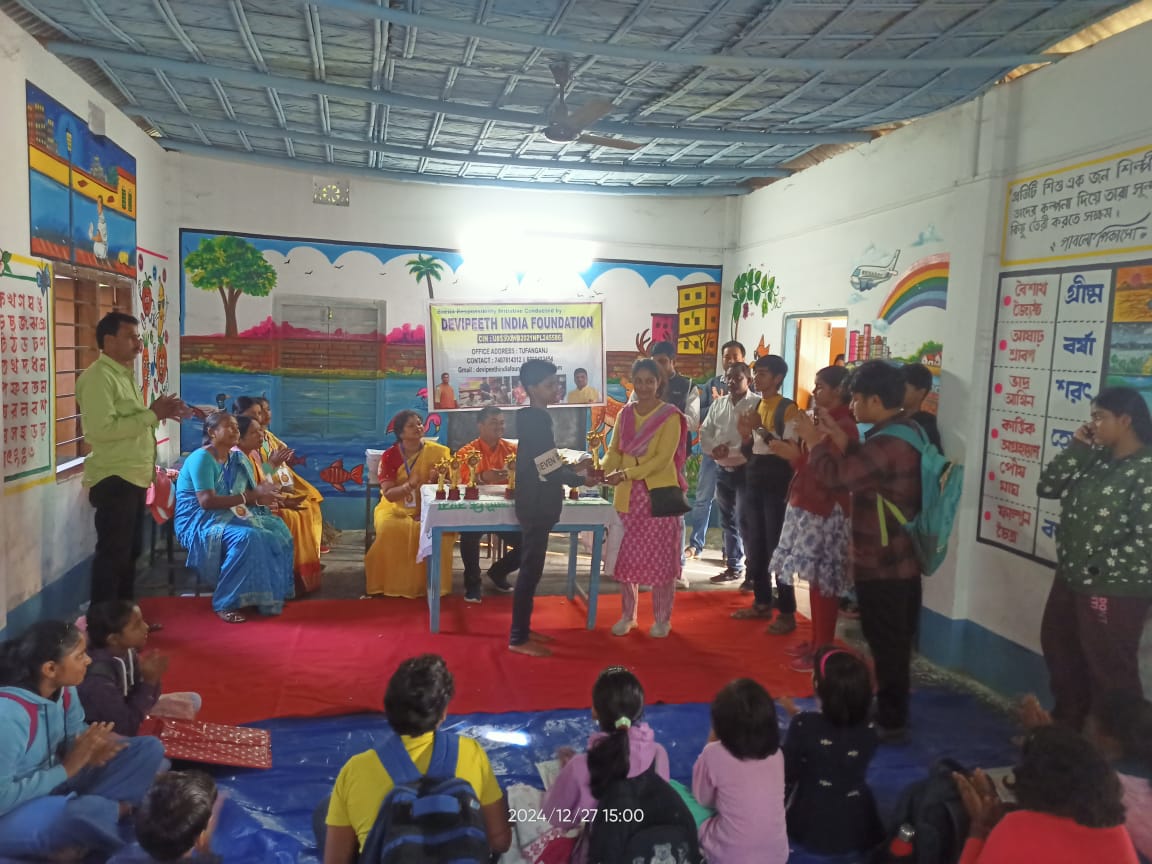CHILD-EDUCATION
- Home
- CHILD-EDUCATION



High Enrollment, But Low Attendance:
Enrollment Rates: According to the Annual Status of Education Report (ASER) 2022, 95% of
children aged 6-14 years are enrolled in schools in rural India, which is a positive
sign of expanding access to education.
Attendance Issues: However, attendance is a major issue. In West Bengal, only around
70-75% of enrolled students attend school regularly, with the rest missing out due to
economic pressures, household responsibilities, and health issues.
Learning Deficits and Low Foundational Skills:
Learning Levels: The ASER 2022 report shows that while enrollment is high, learning
outcomes remain alarmingly low. In rural India, only 42% of students in Class 5 can read
a Class 2 level text. In West Bengal, this figure is slightly higher at 46%, but still
indicates major learning deficits.
Numeracy Skills: In West Bengal, only 34% of Class 5 students can solve a basic
division problem, a statistic that mirrors the national average.
Gender Disparities in Education:
Gender Gaps: Across rural India, more boys than girls attend secondary school,
especially in poorer households. According to UNESCO, girls in rural India are often
pulled out of school to help with domestic chores or due to early marriage.
West Bengal: In West Bengal, girls face slightly better prospects compared to other
states, with the Gender Parity Index (GPI) for secondary education being close to 1.0,
indicating near parity in enrollment. However, dropout rates for girls remain higher due
to social and cultural norms.
School Infrastructure Challenges:
Infrastructure Deficits: ASER 2022 found that 23% of schools in rural West Bengal lack
proper toilets, and around 20% do not have drinking water facilities. Across India, 25%
of schools lack access to functioning electricity and clean drinking water, affecting
the learning environment.
Digital Infrastructure: In the wake of the COVID-19 pandemic, the lack of digital
infrastructure has become a significant issue. Only 12% of rural schools in West Bengal
have access to computers for children, and only 8% have an internet connection, a
problem mirrored across India.
Dropout Rates:
National Context: India’s overall dropout rate remains a challenge, particularly after
the transition to secondary education. According to the Unified District Information
System for Education (UDISE) 2021-2022, the dropout rate at the secondary level in rural
areas across India is around 15%, with poverty being a primary driver.
West Bengal: In West Bengal, the secondary school dropout rate is 16%, with girls
particularly vulnerable due to early marriage, financial constraints, and the need to
contribute to household income.
Impact of Poverty and Child Labor:
Poverty and Education: Poverty continues to be one of the most significant barriers to
education in rural India. A report by NITI Aayog estimates that around 30% of rural
households live below the poverty line, which forces many children into child labor
instead of schooling.
Child Labor: A 2020 UNICEF study revealed that in West Bengal, 11.7% of children
aged 5-14 are engaged in child labor, significantly higher than the national average of
8.4%. Child labor severely affects school attendance and learning outcomes.
Teacher Shortages and Quality of Teaching:
Teacher-Student Ratio: According to UDISE+ 2021-2022, the average student-teacher ratio
in rural schools is 24:1, but the ratio is worse in many states and districts,
particularly in rural areas where the ratio can go as high as 40:1.
Teacher Training: Across India, a significant percentage of teachers, particularly
in rural areas, lack proper training. The National Achievement Survey (NAS) 2021 found
that over 25% of rural teachers lacked adequate subject knowledge and pedagogical
skills, negatively impacting the quality of education.
COVID-19 Impact on Education:
Learning Loss: The COVID-19 pandemic had a massive impact on education, particularly in
rural and underprivileged areas. UNICEF India estimates that over 250 million children
faced disruptions to their education during the pandemic. In rural West Bengal, many
children lacked access to online learning tools, leading to significant learning losses.
Digital Divide: As per ASER 2021, only 10% of rural children had access to online
learning resources during the pandemic in West Bengal, compared to 30% in urban areas.
This digital divide exacerbated existing inequalities in education.
Mid-Day Meal Scheme:
Nutritional Support: The Mid-Day Meal Scheme has been a critical intervention to keep
children in school by providing them with free meals. In West Bengal, nearly 80% of
rural children rely on these meals for their daily nutrition. This program has
significantly improved attendance and enrollment, though disruptions during the pandemic
affected its reach.
National Context: Across India, 120 million children benefit from the mid-day meal
program, making it the world's largest school meal program, which has helped to reduce
hunger and incentivize school attendance.
Government Initiatives and Policy Support:
Government Programs: Nationally, programs like Samagra Shiksha Abhiyan and Right to
Education Act (RTE) have improved access to schooling, focusing on inclusive education
and infrastructure development. In rural India, these schemes aim to provide free and
compulsory education for all children aged 6-14 years.
West Bengal's Initiatives: West Bengal has implemented several state-specific
programs like Kanyashree Prakalpa (focused on promoting girls' education) and Sabuj
Sathi (distribution of bicycles to students). These programs have improved the retention
and access of children, particularly girls, in rural schools.
Copyright 2024 Devipeeth. Developed By Dainty Agency.